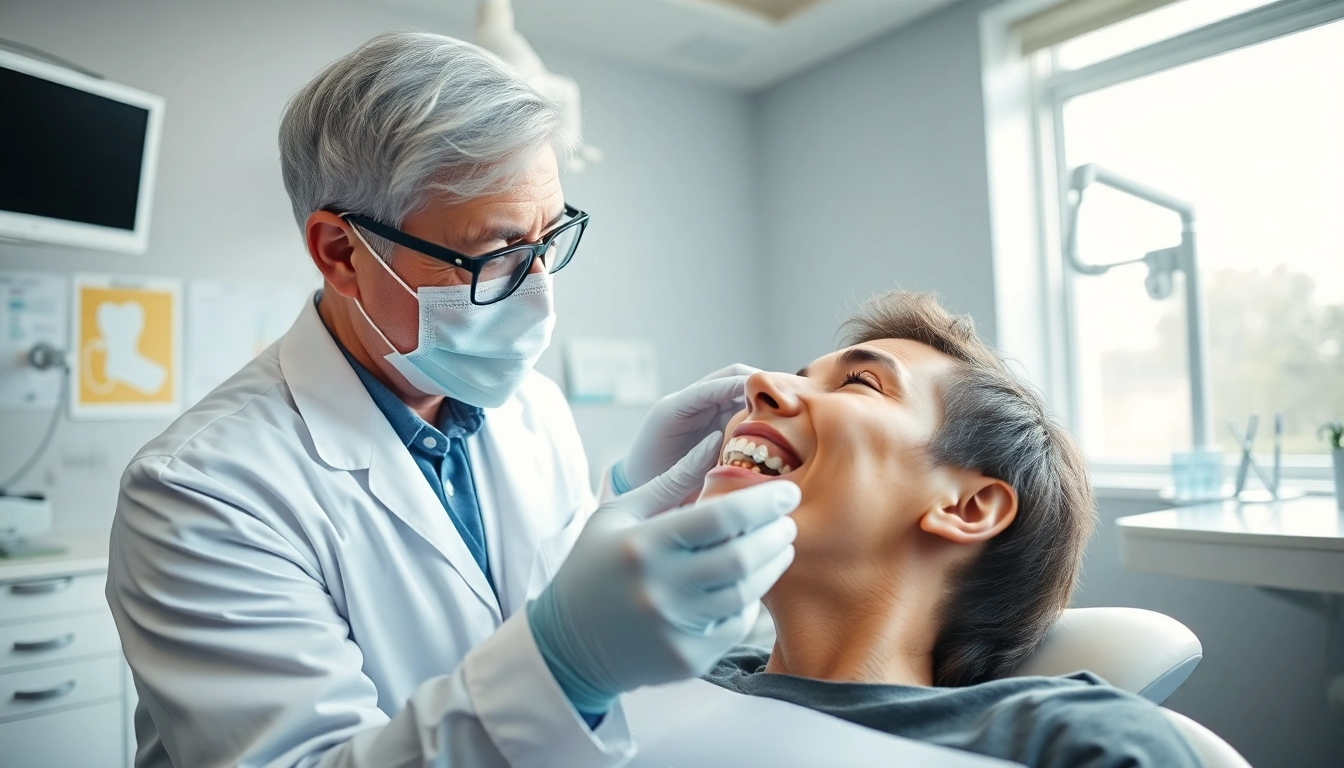Top Insights on Braces Myrtle Beach: Choosing the Right Options for a Beautiful Smile
Understanding Braces Myrtle Beach: Types and Benefits
Braces play a crucial role in orthodontic care, helping individuals achieve straighter teeth and a healthier smile. If you are considering orthodontic treatment and reside in or near Myrtle Beach, understanding your options is essential. With suitable information, you can make an informed decision regarding the best type of braces for your needs. This article explores various braces options available in Myrtle Beach, along with their benefits and considerations for choosing the right one for you. It also highlights the importance of seeking services that align with your specific requirements. You can learn more about these options through a consultation at reputable providers specializing in braces Myrtle Beach.
1. Overview of Braces Options
Braces come in several varieties, each designed to cater to different dental needs and aesthetic preferences. Understanding these options can help you feel more confident and informed about your choice.
Metal Braces
Metal braces have been a popular choice for decades. They consist of high-grade stainless steel brackets and thin metal wires that work together to gradually shift your teeth into the desired position. Metal braces are durable and effective for correcting a range of dental issues, making them a common recommendation by orthodontists.
Ceramic Braces
Ceramic braces function similarly to metal braces but are made from tooth-colored materials to blend in with your natural teeth. This option is especially appealing to adults and teens who seek a less noticeable orthodontic solution. However, ceramic braces can be slightly larger and more fragile compared to metal ones, and they may also require more attention to oral hygiene to prevent staining.
Lingual Braces
Unlike metal or ceramic braces, lingual braces are placed on the back of the teeth, making them virtually invisible when smiling or speaking. They can be a great option for individuals desiring a discreet treatment. However, lingual braces often require specialized skills for installation and adjustment, resulting in a potentially higher cost.
Invisalign
Invisalign involves a series of custom-made, clear plastic aligners that shift teeth gradually. This system is highly favored for its aesthetic appeal and convenience, allowing for easy removal during meals and while brushing. Though Invisalign may not be suitable for all orthodontic challenges, it is an excellent option for mild to moderate alignments.
2. Choosing the Right Type for You
Selecting the appropriate type of braces hinges on various factors, including your dental condition, age, lifestyle, and personal preferences. Here are some crucial considerations to guide your decision:
Dental Condition
Before making any decisions, consult with an orthodontist who can assess your unique dental issues. Some treatments may be more effective depending on the complexity of your case. For example, severe crowding or misalignment may benefit more from traditional metal braces than from clear aligners like Invisalign.
Aesthetic Preference
If invisibility is a significant factor for you, options like ceramic or lingual braces may be particularly appealing. On the other hand, if you prioritize effectiveness and durability, metal braces will likely serve you better.
Lifestyle Considerations
Your daily routine, such as athletic activities, professional obligations, or social events, may influence your choice. For example, athletes may prefer braces that do not interfere with mouthguards. Additionally, if you have a busy schedule that makes regular orthodontic visits difficult, options like Invisalign might offer more adaptability.
3. Key Benefits of Getting Braces
While the primary goal of braces is to straighten teeth, the benefits extend far beyond aesthetics. Here are several compelling advantages of undergoing orthodontic treatment:
Improved Oral Health
Misaligned teeth can lead to various dental issues, such as cavities and gum disease. Braces help align teeth properly, making it easier to maintain good oral hygiene and reducing the risk of health complications in the future.
Correct Bite Issues
Braces can effectively address malocclusions (bite problems), such as overbites or underbites. By correcting these inconsistencies, patients can achieve better jaw alignment, which contributes to improved functionality and less wear on teeth.
Increased Confidence
A straight smile can significantly impact self-esteem. Many individuals report feeling more confident in social situations after braces, and this boost in confidence can positively influence personal and professional aspects of life.
Long-Term Financial Investment
While braces can seem like a considerable initial investment, they often save money in the long run by reducing the need for further dental treatments. Proper alignment can minimize wear and tear on teeth, reducing the likelihood of costly dental procedures down the line.
Common Concerns: Pain and Discomfort
Braces treatment, while beneficial, can be accompanied by certain discomforts. Understanding what to expect and how to manage discomfort can help smooth the transition as you undergo treatment.
1. What to Expect After Getting Braces
It is entirely normal to experience some soreness or discomfort after having braces fitted. This discomfort usually peaks within a few days and gradually subsides as your mouth adjusts to the braces. You may also notice increased sensitivity when eating various foods. It’s advisable to stick to soft foods during this initial period to minimize strain on your teeth.
2. Tips to Minimize Discomfort
Here are several strategies to help alleviate discomfort associated with braces:
- Over-the-Counter Pain Relievers: Consider using pain relievers like ibuprofen or acetaminophen as directed by your healthcare provider to manage discomfort.
- Warm Salt Rinses: Gargling with warm saltwater can soothe irritation caused by brackets or wires rubbing against the inside of your mouth.
- Orthodontic Wax: Applying orthodontic wax to areas of irritation can provide a protective barrier and reduce friction.
- Icy Treats: Ice cream or other cold foods can numb the discomfort temporarily and provide a sweet, soothing option while adjusting to braces.
3. Managing Oral Hygiene with Braces Myrtle Beach
Maintaining optimal oral hygiene is critical when wearing braces. The presence of brackets and wires can trap food particles, making it essential to modify your oral care routine:
- Use Specialized Tools: Consider using orthodontic toothbrushes, floss threaders, and interproximal brushes specifically designed for individuals with braces.
- Regular Cleaning: Brush your teeth after every meal and floss at least once a day to prevent plaque buildup around braces.
- Routine Dental Visits: Continuing routine dental check-ups can help monitor your oral health throughout the treatment process.
The Braces Process: Step-by-Step Guide
Understanding the orthodontic process can help ease anxiety regarding braces treatment. Here is a detailed overview of what to expect at each stage:
1. Initial Consultation Overview
The journey begins with an initial consultation with an orthodontist. During this visit, the orthodontist will evaluate your teeth and bite, discuss your goals, and conduct essential imaging, such as X-rays or photographs of your teeth. This assessment will help identify your specific needs and tailor the treatment plan accordingly.
2. What Happens During Fitting?
Once you have settled on a treatment plan and braces type, the fitting process will take place. The orthodontist will clean your teeth and apply a special adhesive to attach the brackets securely. After fitting the brackets, the archwire is placed, and small elastics may be added to provide additional pressure for effective tooth movement.
3. Maintenance and Follow-Up Visits
Regular follow-up appointments are crucial for monitoring progress and making necessary adjustments. During these visits, the orthodontist will tighten the wires or make any necessary changes to ensure effective treatment. These appointments typically happen every 4 to 8 weeks, depending on individual needs.
Braces Myrtle Beach: Cost Considerations and Insurance
Understanding the financial aspects of braces is an essential consideration for many patients. The cost, payment plans, and insurance coverage related to braces can vary significantly. Here’s what you need to know:
1. Average Costs for Braces
The average cost of braces can span widely depending on the type and length of treatment required. Traditionally, metal braces may cost between $3,000 and $7,000, while ceramic braces and Invisalign may fall in a similar or slightly higher range due to their aesthetic advantages. It’s important to consult with orthodontic offices to receive a reliable estimate based on your specific treatment needs.
2. Understanding Payment Plans
Many orthodontic practices offer flexible payment plans to make braces more affordable. Options may include monthly installments over a set period, thus allowing you to manage costs without compromising your treatment. Make sure to inquire about any hidden fees or deposit requirements.
3. Insurance Coverage Insights
If you have dental insurance, it’s imperative to check your coverage for orthodontic treatment. Policies differ widely in coverage, with some plans covering a percentage of braces costs or providing a flat allowance. Understanding your benefits can significantly reduce your out-of-pocket expenses. Be proactive in discussing your insurance options with your orthodontic provider.
Success Stories: Transformations with Braces Myrtle Beach
Transformative success stories from braces treatments can serve as inspiration and reassurance as you embark on your orthodontic journey. Here are some insights:
1. Before and After Case Studies
Many individuals experience dramatic improvements in their smiles, and before-and-after photos often tell a compelling story. These visual journeys highlight the effectiveness of braces in correcting misalignments and enhancing facial aesthetics. Seeking similar case studies can offer motivation and illustrate the possibilities of treatment.
2. Patient Testimonials
Hearing firsthand experiences can provide insight into the emotional and psychological aspects of braces. Many patients report feeling more confident and happy with their appearance post-treatment, significantly improving their overall quality of life. Testimonials can also underscore the importance of selecting the right provider for your braces treatment, as personal experiences vary.
3. Maintaining Your New Smile
Once braces are removed, the journey doesn’t end. Retainers are typically recommended to maintain teeth positions and prevent regression. Understanding the importance of retainer use is crucial for ensuring long-lasting results. Engage in regular follow-up visits to ensure optimal retention for your newly aligned smile.














Post Comment